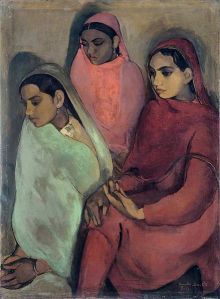India’s Museums and Galleries: A Definitive Divide
by Naina Singh
India is a country of contrasts and contradictions – assertive steps taken forward are often followed by confused, undermining steps backward. While these contrasts have helped shape the country into a diverse and culturally rich environment, at times they have raised important questions about India’s values and priorities.
One such contrast is the qualitative difference between Indian art galleries and national museums. Presented with a rising demand for modern and contemporary Indian art, private galleries have garnered acclaim and viability on the global art market. On the other hand, India’s public museums have slipped toward mediocrity, inconspicuously settling amidst the dusty sheets of bureaucracy.
The National Museum in New Delhi seems to neglect India’s cultural heritage. Some have argued that the museum’s galleries, exhibitions, and conservation and preservation efforts are misaligned and outdated, and that perhaps the museum’s operations are as archaic as the artifacts it so poorly showcases. An article in The Hindu describes the abject state of the National Museum – with poor signage, 25% of galleries closed for three years or more, and an art acquisition committee that has been inactive for 16 years (click here for full article). Moreover, in India, undesirable states of affairs can go unnoticed for long periods of time. In 1953, Harappan-era pottery was discovered in the region of Punjab, but work on the site was unexpectedly halted in 1955 and then remained buried under the sands of bureaucracy for almost five decades until the Archaeological Survey of India finally decided to finish work on the excavations (read more). So why is India so seemingly neglectful of its cultural heritage?
Perhaps it is a byproduct of India’s inefficient and sprawling bureaucratic government system. Or perhaps the never-ending levels of ministries aren’t entirely to blame. The government finds itself accountable to a growing population of one billion, and social needs almost always supersede the conservation of cultural heritage. Instead, we can look to the widespread problem of corruption, which is a hindrance to India’s growth potential.
The private sector is a different story. The success of the 2012 India Art Fair (formerly India Art Summit), an annual art fair that showcases contemporary and modern Indian artists alongside some international artists, attests to the rising success of Indian galleries. What began in 2008 as an art fair showcasing a mere 34 galleries and attracting 10,000 visitors, now is a major event showcasing 84 galleries and hosting an astonishing 128,000 visitors! (click here for a recent NY Times article). The success of Indian auction houses such as Saffronart and Osian’s, and the growing international interest in Indian art has led to a flourishing art scene. Thus, it is the galleries in the liberalized private sector that are achieving success and shaping the field of contemporary Indian art and culture.
The international interest in modern and contemporary Indian art has caught the government’s attention. The National Gallery of Modern Art (NGMA) in New Delhi, a government-run museum that “acquires and preserves works of modern art from 1850s onward,” is a far cry from the National Museum. One need only compare the two museum websites to notice a difference. Not only is the NGMA housed in a former Maharajah’s residence (an interesting juxtaposition in itself), but it also has a wonderful collection that is exhibited in accordance with professional museum standards. The divide between the NGMA and the National Museum is once again one of the many contradictions that lend India its air of lively confusion.
In a recent article in the Economic Times, the Indian government cited a lack of museum professionals as one of the reasons it is unable to keep up with international standards for museum practices. To alleviate this shortage, senior museum officials have recently begun a five-month training program by professionals from the British Museum. Additionally, the Indian government is also soliciting help further west – in Chicago. The Art Institute of Chicago recently received a $1.5 million grant from the Indian government in an effort “designed to foster professional exchange between the Art Institute and various museums in India” (click here for press release). Over a period of four years, the Institute will provide guidance and information “regarding best museum practices for museum professionals in India” through a series of “workshops, seminars, lectures, and courses.”
Both these initiatives are sincere steps in the right direction toward providing citizens a museum experience that properly honors the incredibly beautiful, rich, and varied heritage of India.
Related articles from The Muse Dialogue:
Trackbacks & Pingbacks
- India’s museums and galleries: A definitive divide | The Muse Dialogue












This is a very interesting article… As a Arts Management professional, I wrote a research report on Public Museums in India and a drastic need for some initiative to be taken on them. My report was submitted and approved by the University of Manchester as well as some Government of India officials…
Would be happy to share the details of my research report with you
We are glad that you enjoyed the piece. If you have a link to an online version of your research, we can certainly share it here.
Hi Uma, Thanks for the comment. I would be very interested in the report! You can contact me through my email: ! Thanks!